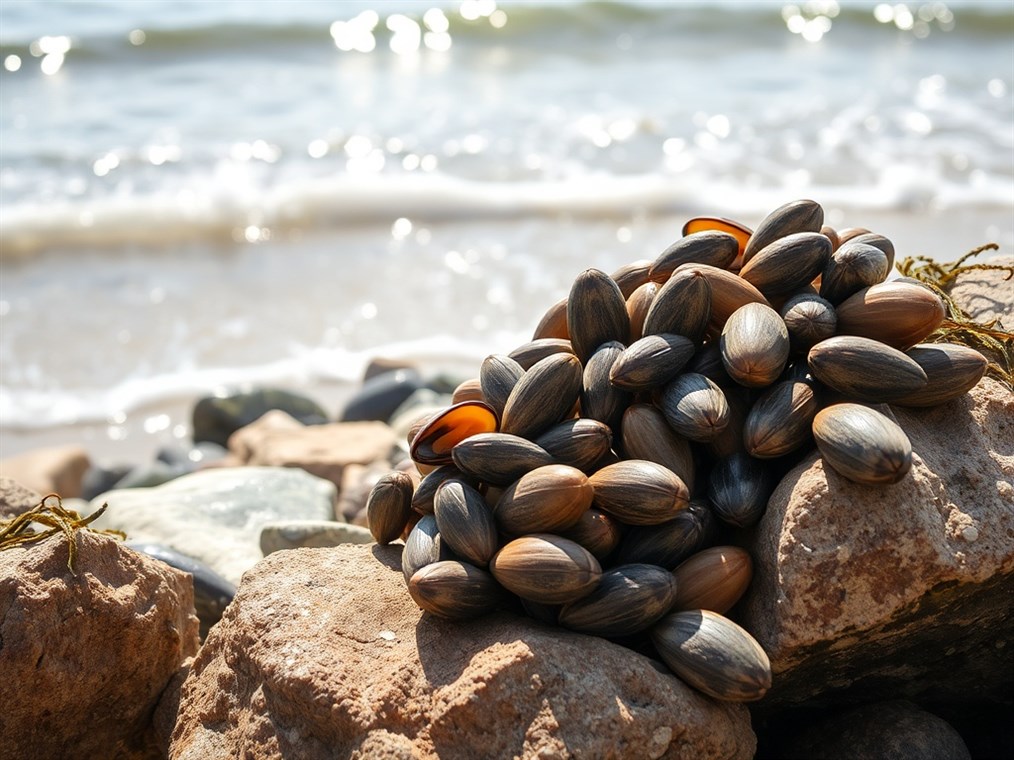Mussels: More Than Just a Shell on the Beach (A Human’s Guide!)
Mussels. You’ve probably seen them clinging to rocks at the beach, or maybe you’ve enjoyed them steamed in a garlicky broth. But there’s a whole world of science hiding behind those unassuming shells! Turns out, each type of mussel has its own unique scientific name, a bit like a secret code used by biologists around the world.
So, why bother with these fancy names? Well, think of it this way: “mussel” is a pretty general term. What one person calls a mussel, someone else might call something completely different! That’s where scientific names come in handy. They’re like a universal ID card, ensuring everyone’s talking about the exact same critter, no matter where they are or what language they speak. This system, called binomial nomenclature, gives each species a two-part name: the genus and the species. Simple as that!
Now, let’s dive into the salty stuff – marine mussels! These are the guys you’re most likely to see at the coast, stubbornly clinging to rocks as the waves crash in. Most of them belong to the Mytilidae family, and the Mytilus genus is where things get really interesting.
Take Mytilus edulis, for example. That’s the blue mussel, or the edible mussel, as some call it. It’s super common, found all over the North Atlantic and Pacific. You’ve probably eaten one! Then there’s Mytilus galloprovincialis, the Mediterranean mussel, which, as you might guess, is a big deal in the Mediterranean Sea. And who could forget the Perna canaliculus, New Zealand’s famous green-lipped mussel, known for its, well, green-tinged shell! Pretty cool, right?
Here’s a little twist: what we used to think was just one species, Mytilus edulis, is actually a whole bunch of closely related species! Scientists are still figuring out the family tree, with names like Mytilus trossulus, Mytilus chilensis, Mytilus planulatus, and Mytilus platensis popping up. It’s like discovering your family has way more cousins than you thought!
But wait, there’s more! Mussels aren’t just ocean dwellers. We also have freshwater mussels, and these guys are a whole different ballgame. They belong to the Unionida order and are super diverse, especially in North America. I remember the first time I saw one in a river – I had no idea mussels lived there!
These freshwater fellas are vital for keeping our rivers and lakes healthy. They filter the water and provide food for other creatures. Plus, they have this crazy life cycle where their larvae, called glochidia, hitch a ride on fish! Talk about a weird way to grow up!
Some freshwater mussel names to know include Margaritifera margaritifera, the eastern pearlshell, which likes super clean streams. Then there’s Quadrula cylindrical, the rabbitsfoot mussel, which sadly is endangered. And let’s not forget Epioblasma triquetra, the snuffbox mussel, a small but mighty species.
One thing to keep in mind: Zebra mussels (Dreissena polymorpha) are freshwater mussels, but they’re not related to the other freshwater mussels we just talked about. They’re more like the black sheep of the family!
So, there you have it! Mussels are way more complex than they seem. Knowing their scientific names isn’t just for scientists; it helps us all understand and appreciate these amazing creatures, whether we’re enjoying them on a plate or spotting them in their natural habitat. Next time you see a mussel, remember there’s a whole scientific story hiding beneath that shell!

